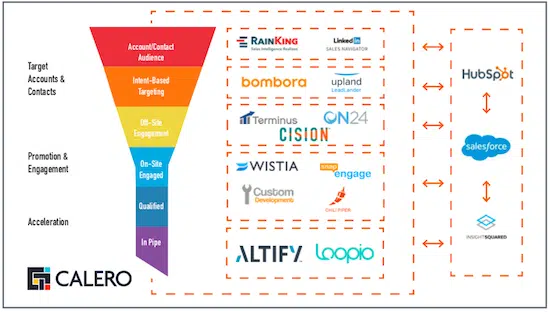More than 70% of B2B marketers are expected to utilize third-party intent data to target prospects or engage groups of buyers in selected accounts by the end of 2022. Product marketers are increasingly turning to third-party intent data to optimize performance and maximize campaign outcomes. Before we deep dive into the discussion, let’s start with the definition of intent data.
Intent Data is behavioral information collected from an individual or company’s online activity that helps interpret the B2B buyer intent.
The data is used by product marketing, demand generation, and sales development teams. As with any marketing purchase, education is the key to making the right decision. Let’s discuss some of the questions you should ask while evaluating intent data providers.
8 Questions to Evaluate Intent Data Providers
1. How is Intent Data Collected?
Intent data can primarily be collected through Data Co-ops, Stand-alone publishers, and Bidstream. Each method of collection has its benefits and shortfalls.
- Data Co-ops: Data co-op is a group organized for sharing pooled data from online consumers between multiple or more companies. Data co-ops gather first-party data from a large number of publishers (making the collective a third-party source).
- Stand-alone publishers: Targeting platforms can also collect intent data from stand-alone publishers as it offers strong signals from publishers existing web properties. However, the challenge is that data from a single publisher could be limiting when it comes to identifying buyer intent.
- Bidstream: Bidstream data is the information that a publisher shares with an advertiser when they they place bid on a piece of inventory (ad unit) via a ad exchange. This data is usually collected by ad exchanges across biddable online advertising inventory and usually has a massive volume.
Due to the risks associated with GDPR compliance, Bidstream data is losing popularity, and publishing platforms (SSPs) have restrictions on commercializing derivative data without explicit user consent.
It’s important to understand where your intent data comes from. Always ask your publishers where their data is from, how they collected this data, and whether they have partnerships with other companies. Usually, an intent data provider that collects data from a large pool of publishers might be better at identifying intent signals.
2. How type of intent signals do you track, and how do you do it?
At first glance, this might seem like one of those questions you should skip when you evaluate intent data providers. As most intent data providers track at least one or two intent data signals, but when you ask ‘what type of intent data signals do you track?‘ the answer you’re looking for can include:
- Search engine queries
- White paper and e-book downloads
- Webinar registrations
- Social media engagement
- Website visits
- Digital ad and banner ad clickthroughs
The more activities your intent data providers track, the more the odds of them finding relevant accounts.
3. How do you verify the quality of your intent qualified leads?
Your sales team reaches out to a company that appears to be exhibiting an intent “surge,” but the person no longer works for the company. Does this sound like a familiar situation? In some cases, the company may not be even close to being in your target market.
It’s essential to ask your intent data providers how they verify the quality of leads you receive. For instance, do they filter out non-business email addresses from the list? Also, will they replace an out-of-target lead?
4. How can you integrate the intent data into your existing MarTech stack?
Most intent data providers have built-in integrations with popular marketing tools. For instance, Bambora seamlessly integrates with HubSpot to ensure that the marketing and sales team has access to intent data. However, the difficulty of integration might vary depending on how many tools you have in your present martech stack.

Ideally, you would want your intent data solution to connect with your marketing automation, CRM, data management, demand-side platform (DSP), display advertising, and retargeting solutions.
For instance, Calero’s martech shows how critical it is for your intent data to connect with other solutions in their martech stack. This is undoubtedly one of those questions that you should never skip while you evaluate intent data providers.
5. Is your Data GDPR and CCPA complaint?
If your intent data provider collects data from stand-alone publishers or uses data co-ops, the chances are that the data will be GDPR and CCPA compliant. With Bidstream data, the risk of non-compliance is higher; hence it is always important to double-check this information with your intent data provider.
6. Is there a way to test your data before we buy it?
Many intent data providers allow you to test their data before you make the purchase. The last thing you want to do while making such an important decision is purchase an annual subscription and then discover that it doesn’t work.
7. Who currently uses your data and the typical use cases?
Most intent data providers will provide you with a list of clients they work with, along with references. However, it is important to understand how some of these customers use the intent data. If you are new to the whole process, you might discover something new in the discussion.
8. How is the solution priced?
Intent data providers can charge by the number of topics you want to monitor, the number of accounts you want to watch, or they can provide a subscription plan with a monthly or quarterly commitment.
A word of caution, intent data can be expensive, especially if you are in the beginning stages of building your demand generation and account-based marketing strategy. The pricing for the annual subscription can be upwards of $35,000, so make sure you budget it as part of your yearly marketing plan.
